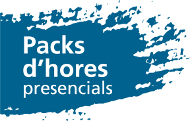How To Reach Elite Level Of DevOps Maturity
Content
Using this, you can identify which level your organization falls into. It might be time to check in on how your teams are doing and identify areas for improvement. 40% of teams practice ChatOps for conversation driven development during remediation. If you just said “huh, what is ChatOps?” or “I think I’m doing ChatOps, maybe?” – check out a real life scenario and pro-tips. Dev and ops teams share some responsibilities but still use separate tools. Continuous Delivery presents a compelling vision of builds that are automatically deployed and tested until ready for production.
- 40% of teams practice ChatOps for conversation driven development during remediation.
- Imagine that a developer makes a change in the code after this happens you need to promote the code to the integration environments, send notifications to your team members and run the testing plan.
- Continuous Delivery Maturity Models provide frameworks for assessing your progress towards adopting and implementing continuous integration, delivery and deployment (CI/CD).
- Alternately, the organization concentrates on a subset of the practices, which have the greatest business value, or given their relative immaturity, are a detriment to the other practices.
- Organizations still witness siloed operations even after a year of DevOps journey with some automation but acknowledge the value of the new skill.
Andreas Rehn is an Enterprise Architect and a strong advocate for Continuous Delivery, DevOps, Agile and Lean methods in systems development. At beginner level, you start to measure the process and track the metrics for a better understanding of where improvement is needed and if the expected results from improvements are obtained. Reporting at this stage would typically include static analysis of code and quality reports which might be scheduled so that the latest reports are always accessible to facilitate decisions on quality and where improvements are needed. A typical organization will have, at base level, started to prioritize work in backlogs, have some process defined which is rudimentarily documented and developers are practicing frequent commits into version control.
Continuous Delivery Maturity Model
Forming multidisciplinary teams capable of accepting accountability for their output. Most common ones are Jenkins from CloudBees, Travis CI, Go from ThoughtWorks, and Bamboo from Atlassian. You can actually understand what’s going on inside your live applications. How your organization can move to a higher level of GitOps and what it would look like when you get there. Continuous Delivery and Continuous Deployment capabilities, together, represent the holy grail of modern software engineering.
Deploying is the core of how you release your application changes. In this blog post, we will be exposing maturity level checklists for different DevOps areas so you have an idea where you at in terms of Continuous Delivery. Fast and high-quality results from the application of the technique are possible only after a long and thorough adjustment of the interaction between all the parties involved. Database migration and rollback is automated and tested for each deploy. Almost all testing is automated, also for non-functional requirements. It is easy to replace technology for the benefit of something better .
IT can once again start pushing innovation instead of restraining it by expensive, slow, unpredictable and outdated processes. There are many ways to enter this new era and here we will describe a structured approach to attaining the best results. While agile methodologies often are described to best grow from inside the organization we have found that this approach also has limitations. Some parts of the organization are not mature enough to adapt and consequently inhibit development, creating organizational boundaries that can be very hard to break down.
DevOps maturity level highly relies on a company’s competence to adopt and respond to internal and external feedback. And to achieve that competency, DevOps heavily relies on automated processes and establishing best practices that streamline the SDLC. DevOps focuses on bringing quality software by accelerating time-to-value.
The first step in moving to DevOps is to pull from agile principles – people first, then process and tools. Dev and ops teams use a common set of tools but don’t have visibility into each others’ work. You can fully orchestrate tools that are involved in the process and manage your release milestones and stakeholders with Clarive. There is the ability to choose the best option, thanks to testing and a more significant number of trials. The company will save resources by discontinuing unpromising products. I like the idea a lot and would like to use that model for us to evaluate our own maturity.
This model may be applied alongside the broader CD Maturity Model, or independently, to evaluate and further develop an organization’s infrastructure practices. The goal of this guide is to first and foremost highlight the practices required for CD. The tools simply help with the adoption of the practice; the simple rule being that we should never build a process or practice around a tool, the tool must rather make the process or practice easier or more efficient. Schedule a demo with one of our specialists and start improving your devops practices.
Components of a Complete DevOps Maturity Model
See how Atlassian’s Site Reliability Engineersdo incident managementand practice ChatOps for conversation-driven development. Before we continue, we need a shared understanding of infrastructure as code. To truly reach the CD zenith continuous delivery maturity model software engineers really have to turn all the IT “dials” to the max. For teams just embarking on the CD journey, it can be a daunting task to try and make sense of all the frameworks, practices, tools, buzzwords and hype out there.
Here is another attempt to the maturity model that picks the best pieces from each of those. DevOps Maturity by Data – This measures DevOps maturity by the capability to automate data changes and automatically validate functionality regularly by using DataOps. Shift-left security strategy and little to no automation, so all testing is done manually.
change faster? To do more with less? To surpass your
Dev and ops teams use a common set of tools but share information manually. Dev and ops teams have different responsibilities and their own sets of tools, and they struggle to share data. The result is the first pass at an evolving Infrastructure as Code Maturity Model.
As a result of this you can also start cross referencing and correlating reports and metrics across different organizational boundaries,. This information lets you broaden the perspective for continuous improvement and more easy verify expected business results from changes. Rather than a destination, DevOps is a journey towards more frequent, more reliable releases, automation, and stronger collaboration between business, IT, and development. Using the DevOps maturity model, you can determine where your team stands on the DevOps path. But despite the challenging situation, adopting the DevOps approach ultimately pays off.
D3.js Data-Driven Documents
In looking at thethree ways of DevOps- flow, amplify feedback, and continuous learning and experimentation – each phase flows into the other to break down silos and inform key stakeholders. Check out our DevOps guides and best practices to help you on your DevOps journey. Employees in high-performing DevOps teams were2.2x more likely to recommend their organizationas a great place to work. The suggested tools are the tools we have experience with at Standard Bank. The tools listed aren’t necessarily the best available nor the most suitable for your specific needs. You still need to do the necessary due diligence to ensure you pick the best tools for your environment.
It is also important to decide on an implementation strategy, you can e.g. start small using slack in the existing process to improve one thing at a time. However, from our experience you will have a better chance of a successful implementation if you jump start the journey with a dedicated project with a clear mandate and aggressive goals on e.g. reducing cycle time. The ultimate goal of the workstream is to benefit practitioners with consistent measures of CD maturity and guidance for gradually and iteratively improving their software delivery and management processes. Just as SLSA is a cross-industry collaboration supported by The Open Source Security Foundation, the Workstream’s ultimate goal will be a cross-industry, collaborative framework for measuring CD maturity. These measures will guide our industry toward greater security, integrity, and stability in our engineering practices.
Every company is unique and has its own specific challenges when it comes to changing the way things work, like implementing Continuous Delivery. This maturity model will give you a starting point and a base for planning the transformation of the company towards Continuous https://globalcloudteam.com/ Delivery. After evaluating your organization according to the model you need to set the goals and identify which practices will give your organization the best outcomes. If there are practices you do not want to adopt you need to analyse the consequences of excluding them.
Health monitoring for applications and environments and proactive handling of problems. QCon London brings together the world’s most innovative senior software engineers across multiple domains to share their real-world implementation of emerging trends and practices. The model also defines five categories that represent the key aspects to consider when implementing Continuous Delivery. Each category has it’s own maturity progression but typically an organization will gradually mature over several categories rather than just one or two since they are connected and will affect each other to a certain extent.
For accurate testing the component should be deployed and tested in a production like environment with all necessary dependencies. At this stage it might also become necessary to scale out the build to multiple machines for parallel processing and for specific target environments. Techniques for zero downtime deploys can be important to include in the automated process to gain better flexibility and to reduce risk and cost when releasing.
Challenges of Implementing DevOps
The Workstream will take a practice-oriented approach by implementing proofs-of-concept and reference Continuous Delivery systems that illustrate best practices in adopting maturity standards. As a Workstream in the broader Supply Chain SIG, we will promote open source practices and tooling projects that demonstrate best practices in Supply Chain Maturity. The Supply Chain Maturity Model Workstream will foster collaboration among SIG participants in defining a shared framework for discussing and measuring supply chain maturity. Initial members include engineers from Berkshire Grey, eBay, Google, Kusari, and of course the CDF itself. We will seek to define CD maturity in terms of automation, seeking metrics and best practices around processes like build, test, and deployment automation, canary analysis, blue-green deployments, automated rollback, and more. Continuous delivery implementations pass through phases of maturity.
Business Technology Establish the optimal tool
For any non-trivial business of reasonable size this will unfortunately include quite a lot of steps and activities. The end-to-end process of developing and releasing software is often long and cumbersome, it involves many people, departments and obstacles which can make the effort needed to implement Continuous Delivery seem overwhelming. These are questions that inevitably will come up when you start looking at implementing Continuous Delivery. After making any javascript or css changes, optimize the project using RequireJS Optimizer.
Amplify feedback for faster resolution
Continuous improvement mechanisms are in place and e.g. a dedicated tools team is set up to serve other teams by improving tools and automation. At this level, releases of functionality can be disconnected from the actual deployment, which gives the projects a somewhat different role. A project can focus on producing requirements for one or multiple teams and when all or enough of those have been verified and deployed to production the project can plan and organize the actual release to users separately.
Since elite DevOps are meant to be a completely automated CI/CD pipeline, you must adopt to always-on compliance possible with policy as code ensuring continuous security and testing and other key components of the DevOps. As mentioned above in the table, you can be at one of the four stages of devops maturity model. Here, what you need is to know where you are standing and what level of maturity you need to acquire.
The best way to include the whole organization in the change is to establish a solid platform with some important prerequisites that will enable the organization to evolve in the right direction. This platform includes adopting specific tools, principles, methods and practices that we have organized into five key categories, Culture & Organization, Design & Architecture, Build & Deploy, Test & Versification and Information & Reporting. Structuring Continuous Delivery implementation into these categories that follows a natural maturity progression will give you a solid base for a fast transformation with sustainable results. Minimizes human intervention in software development processes and is the key to continuous integration and continuous delivery. The automation process helps reduce time consumption, save resources, and minimize human errors by automating repetitive tasks in development, testing, and production. At the advanced level, the team will have the competence and confidence it needs to be responsible for changes all the way to production.
This crucial work bridges many of the concepts first introduced in Humble and Farley’s Continuous Delivery, with the evolving processes and practices to support cloud computing. Imagine that a developer makes a change in the code after this happens you need to promote the code to the integration environments, send notifications to your team members and run the testing plan. It’s important to make sure database changes be taken into consideration when releasing to production. Otherwise, your release team will be working late at night trying to finish up a release with manual steps that are error-prone and nearly impossible to rollback. Continuous Delivery allows automating the entire software release process.

















